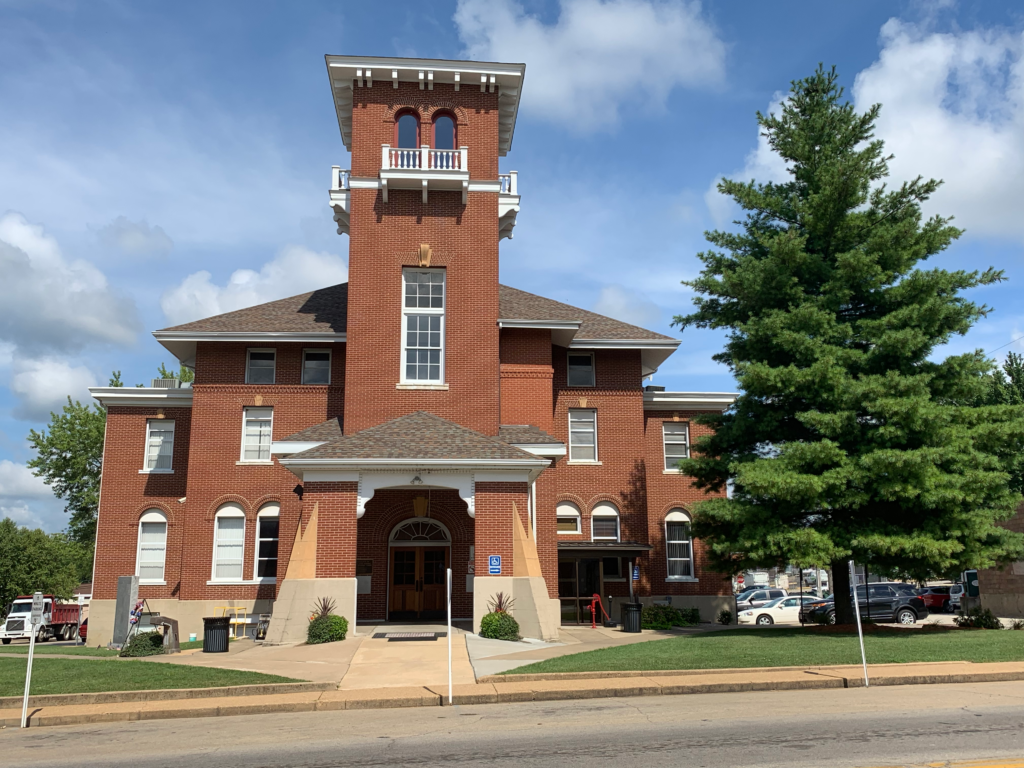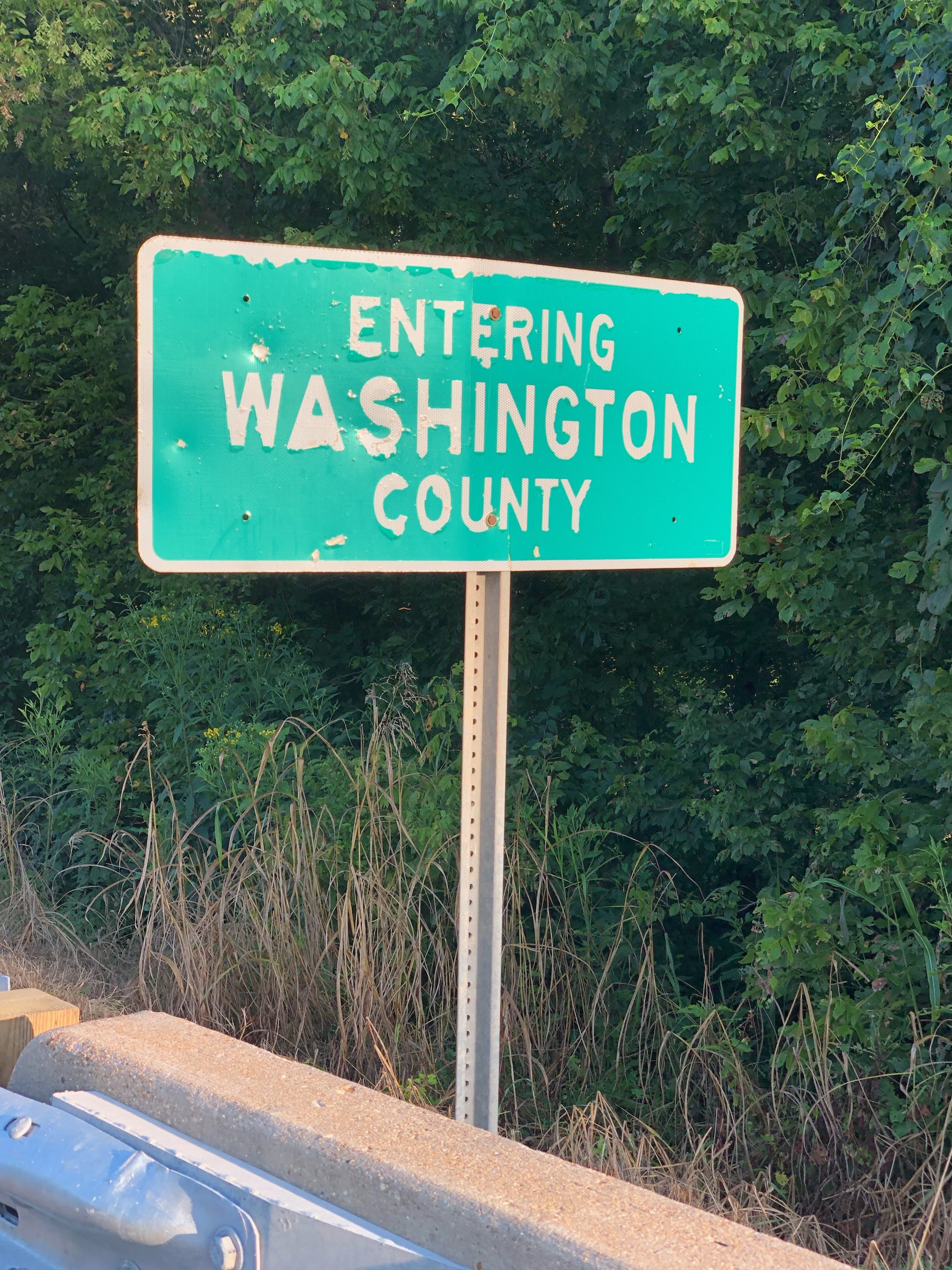This week, the show traveled to the Washington County Fair in Potosi, MO; county seat of Washington County. We had a large panel of experts join us this week, including First District Commissioner Doug Short, President of the Washington County Historical Society Jerry Sansegraw, Presiding Commissioner David Sansegraw, Publisher of the Independent Journal Chris Richards, and Washington County Farm Bureau President Jim Reed.
Washington County, named after George Washington, was founded August 21, 1813 and was the sixth county formed in the state on a plot of 762 square miles of land cut out of St. Genevieve County.
The first explorers that came to the county was two Frenchman by the name of Renault and La Motte in 1722-23. They came to the land to establish two mines, appropriately naming them Mine Renault and Mine La Motte respectively, hoping to find the treasures of gold and silver. However, they found lead instead. The two mined what they could and left their mines after taking all the lead they could take. The practice of lead mining, though, would soon continue. In 1763, a prospector by the name of Francis Breton came to the area, this time looking to make a living off of the lead rather than hoping to find any silver or gold. His mine became so popular that the mining village erected there, named Breton, is what originally drove a large population to the area.

The area of Washington County has been an integral part to Missouri’s history ever since. On July 17, 1799, for instance, the Spanish Government gave Moses Austin, one of the most famous Missourians for his development of the lead industry, 753 square arpents (about 636 square acres) in order to drive the lead industry. Other than lead, Austin was responsible for the United States colonization of Texas. Even though he died before the colonization took place, his dream was carried on by his son Stephen Austin and is what eventually lead to the Republic of Texas. This legacy has lead to Potosi being unofficially known as the “cradle of Texas.” In 1815, Moses Austin granted 40 acres of land for a county seat to be built, and that is where Potosi stands now.
The courthouse was originally supposed to be a large two story building, as the residents of the county wanted Potosi to be where the Missouri State Capitol was located at. But, when the building was being built, they ended up running out of money during the construction of the first floor. Even with this setback, Potosi still got very close to achieving its goal, as it ended up losing to St. Charles by only one vote.

They ended up finishing their courthouse in 1850, along with a log jail. These structures, however, ended up just as the majority of other early courthouses across Missouri ended up, being burnt down. After the burnings in 1907, the residents built the beautiful courthouse which still stands in the city today.
One of the most famous stories to come out of the county was an 1870 cattle dispute turned family murder. David and Louise Lago, along with their son and a young woman named Mary Christopher and her infant, were all butchered and set ablaze by two men named Charles Jolly, Jr., and John Armstrong. The two men were angry that the sheriff ruled in favor of the Lago family in the cattle dispute and they decided to take out their anger in one of the most brutal and savage ways possible. After being arrested, the town formed and angry mob to try and lynch the two murderers, but was stopped by the sheriff’s guards firing into a crowd and wounding 30 (after an accidental weapon discharge in the crowd). After their trial in St. Louis, the two still met the same fate and were hung in the Potosi courthouse.

During the Civil War, the county was divided just as much as the whole country between the Confederacy and Union. The county had many slaves working the land’s hilly crop fields and the land’s mines. However, there were a great deal of bushwackers, or people who remained independent from the Union and Confederation, in the county. There weren’t any large battles, but there were multiple skirmishes throughout the county.
Today, the county is supported by Ameren Electric and Crawford Co-op, has multiple celebrations such as the Fair and Austin festivals, and has multiple high, middle and elementary schools.
Podcast: Play in new window | Download


